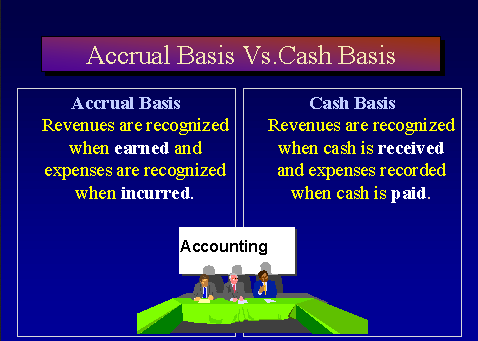The interest coverage ratio is a debt and profitability ratio that is used to work out whether your company can easily pay interest on its debt. Additionally, the interest coverage ratio is the ratio of your company’s earnings before interest or taxes (EBIT) to its interest expense. Where your company has a high interest coverage ratio, it is likely that it is in a good position to pay its interest expenses. A revolving line of credit can be a useful tool for your small business provided you use it properly.
Many times this rate is not stated in the contract and must be estimated with specific inputs from the lease contract. LeaseQuery discusses the steps involved with calculating the rate implicit in a lease in the following articles for ASC 842, GASB 87, and IFRS 16. If a company has zero debt and EBT of $1 million (with a tax rate of 30%), their taxes payable will be $300,000.
How to Calculate Interest Paid on a Loan for Tax Purposes
But, you need to investigate whether the reason is financial distress or a one-time non-recurring event such as an acquisition. In that case, a lower value of this ratio does not necessarily signify good financial health of the firm. It may also be the case that the company secured funding at low interest rates by agreeing to restrictive covenants. While looking at this ratio, we should keep in mind the lending cost of the firm’s competitors or peers.
The concept of interest is the backbone behind most financial instruments in the world. This measures a company’s capability to meet its interest on debt How to calculate interest expense using its operating income. Operating expenses are a controllable type of expense that a business should always aim to minimize to make higher profits.

If annual EBIT is $80 million, then its interest coverage ratio is 10, which shows that the company can comfortably meet its obligations to pay interest. The amount of interest expense for companies that have debt depends on the broad level of interest rates in the economy. Interest expense will be on the higher side during periods of rampant inflation since most companies will have incurred debt that carries a higher interest rate. On the other hand, during periods of muted inflation, interest expense will be on the lower side.
How Do You Calculate Interest Expense?
If the interest rate is high and the loan amount is small, then simple interest is the better option. This is because with a small loan amount, the interest payments will be large in comparison to the loan amount itself, so it makes more sense to just calculate the interest on a per-period basis. While mortgage interest is tax-deductible in the United States, it is not tax-deductible in Canada.
Find out how GoCardless can help you with ad hoc payments or recurring payments. In the wake of the COVID-19 pandemic and escalating tensions with China, American companies are actively seeking alternatives to mitigate their supply chain risks and reduce dependence on Chinese manufacturing. Nearshoring, the process of relocating operations closer to home, has emerged as an explosive opportunity for American and Mexican companies to collaborate like never before. Interest, therefore, is typically the last item before taxes are deducted to arrive at net income. Volatility profiles based on trailing-three-year calculations of the standard deviation of service investment returns. Get instant access to video lessons taught by experienced investment bankers.
CA Immobilien Anlagen (VIE:CAI) Has A Somewhat Strained Balance Sheet – Simply Wall St
CA Immobilien Anlagen (VIE:CAI) Has A Somewhat Strained Balance Sheet.
Posted: Tue, 22 Aug 2023 05:01:27 GMT [source]
If the same company takes on debt and has an interest cost of $500,000 their new EBT will be $500,000 (with a tax rate of 30%), and their taxes payable will now be only $150,000. The greater the percentage of the original debt principal paid down over the borrowing term, the more the incurred interest expense should decline, all else being equal. For example, in the United States, the middle class has a marginal tax rate of around 25%, and the average inflation rate is 3%. To maintain the value of the money, a stable interest rate or investment return rate of 4% or above needs to be earned, and this is not easy to achieve.
For example, if a company pays $1 million to its creditors and $200,000 is applied toward the principal debt, then the interest expense is $800,000. The carrying balances of debt can be reduced by mandatory repayment of debt (i.e. scheduled principal amortization) and optional repayments (i.e. the discretionary prepayment of the principal, or a “cash sweep”). In this example, as of December 31 no interest has been paid on the loan that began on December 15. Therefore, the company needs to record an accrual adjusting entry that debits Interest Expense for $500, and credits Interest Payable for $500.
The “I” in EBIT
From the perspective of the borrower, interest is the fee paid for the use of borrowed money or an asset which is not yet owned. From the perspective of the lender, interest is the income collected from allowing a third party use of money over a period of time. Interest expense is a general term used to describe the cost of borrowing money. It can have slightly different meanings depending on the context, but in corporate finance, interest expense is generally the primary financing expense on a company’s income statement.

It is one of a number of debt ratios that can be used to evaluate a company’s financial condition. The term “coverage” refers to the length of time—ordinarily, the number of fiscal years—for which interest payments can be made with the company’s currently available earnings. In simpler terms, it represents how many times the company can pay its obligations using its earnings.
Interest expense formula
After your company has paid the interest, the accounts payable section is debited and the cash account is credited to demonstrate that funds have been spent. To further illustrate interest within lease accounting, we will review a lease from the perspective of the lessee making payments to lease an asset. In this example, the lease includes a transfer of ownership of the underlying asset to the lessee at the end of the lease term, making it a finance type lease (capital lease under ASC 840). The interest paid during the lease term is classified as lease interest expense by the lessee.
Capital leases are the exception because you’re leasing an asset rather than borrowing money. Your business’s income statement offers an in-depth look at its financing. If any of this financing involves borrowing money, you’ll need to make interest payments as you repay the balance.
Is Tamarack Valley Energy (TSE:TVE) Using Too Much Debt? – Simply Wall St
Is Tamarack Valley Energy (TSE:TVE) Using Too Much Debt?.
Posted: Mon, 21 Aug 2023 11:31:02 GMT [source]
In the following, there will be two examples using the same starting information, but one will use simple interest, and the other will use compound interest. This will show which kind of interest is more beneficial for the borrower and which type of interest is more beneficial for the lender, and to what extent. For our Interest Calculator, leave the inflation rate at 0 for quick, generalized results. But for real and accurate numbers, it is possible to input figures in order to account for inflation. However, if Derek has a marginal tax rate of 25%, he will end up with $239.78 only because the tax rate of 25% applies to each compounding period. This interest is added to the principal, and the sum becomes Derek’s required repayment to the bank one year later.
For companies with historically more volatile revenues, the interest coverage ratio may not be considered good unless it is well above three. If your business is asset-intensive, an increase in interest rates can have serious implications. The best way to guard against potential issues is to attempt to keep the interest at the same rate for as long as possible.
Compound interest results in a higher interest expense for the borrower than simple interest and a larger return for the lender. Compound interest also occurs in financial instruments such as savings accounts and bonds. Let’s take another case where your company recorded operating income of the same amount, $100,000, with the same tax rate of 10%. However, this time, you also record an expense of $5,000 on your business’s income statement.
Step 2. Interest Expense Calculation Example
These expenses indicate how the company performs, a critical indicator that banks and investors gauge. Let’s not forget to mention one of the biggest benefits of borrowing money is that it is tax-deductible. In a typical transaction, a lender would extend a certain amount of money to a borrower in addition to a negotiated term. This negotiated term is usually a fixed percentage of the amount the borrower and lender agreed to. Interest expense is the price that someone pays in exchange for borrowing money. This ratio can be easily calculated by dividing the total interest expense by the total short-term and long-term debts.
- Interest expense can easily be explained as the cost of borrowing money or what the bank charges her to borrow the money.
- This will show which kind of interest is more beneficial for the borrower and which type of interest is more beneficial for the lender, and to what extent.
- Sometimes, it can be combined into a single line called “Interest Income – Net” or “Interest Expense – Net.”
- The lessee periodically records depreciation expense representing the use and passage of time of ROU asset and interest expense on the outstanding lease liability over the term of the lease.
- Roberta makes notes in the business files that in the future she should always ask the bank which type of interest expense they will use.
This is because with a large loan amount, the total interest payments will be small in comparison to the loan amount itself. It makes more sense to spread those payments out over the life of the loan. Please note, however, that the example above illustrates annual compounding. If interest were compounded more frequently, like monthly or quarterly, the formula would need to take this into account.

Recent Comments